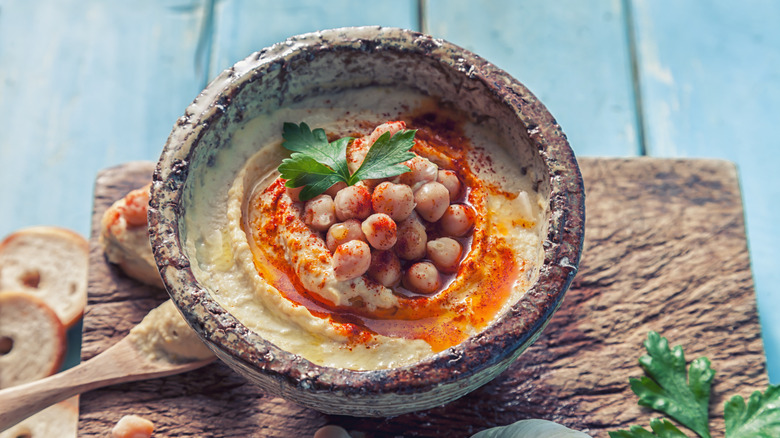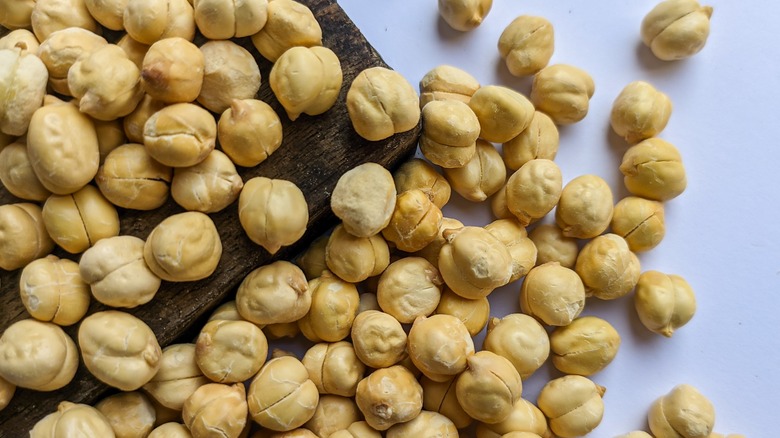The Benefit To Using Dried Chickpeas For Your Hummus
Have you ever tried making a basic hummus recipe at home, only to find that it's never quite as smooth, creamy, and fluffy as store-bought versions? Chances are, it's the chickpeas that are to blame. The texture of hummus depends on several factors: The quality of the tahini, the presence of cold water, and, most important of all, the chickpeas. Not only do these legumes need to be buttery soft when you blend them, but they're also best when peeled. That's right — each chickpea should be skinned, because, if not, the peel can leave a gritty and coarse texture in your hummus.
This is where dried chickpeas come into play: They are much easier to peel than canned versions. The first step is to soak the garbanzo beans, either in boiling water for a brief hour or in cold water all night. Then, drain that water and dry the legumes. Now, here's the real trick: Toss the chickpeas in baking soda – about 1.5 teaspoons for every 2 cups of legumes — and heat them for a few minutes before simmering them in boiling water until they are cooked through.
Baking soda increases the pH of water and makes it alkaline, which weakens the tough pectin that is present in chickpeas. This in turn softens the beans and helps break down their fibrous skins much better. You'll see these outer layer come apart as the legumes simmer; they can simply be drained off along with the rest of the water.
Dried chickpeas can make a more flavorful hummus, too
The issue with canned chickpeas is that they tend to be inherently more tough and grainy, whereas dried ones can be cooked up until they are tender enough to be blended into a smooth and luxurious dip — with the help of baking soda of course. You can still use canned chickpeas to make hummus, but for that truly coveted texture, you'll have to skin each individual kernel painstakingly by hand. Alternatively, you could drain, dry, and toss the entire batch in some baking soda and then heat the legumes for a couple of minutes; finally, rinse them in water while rubbing them with your hands until their skins come off.
However, there is another factor to consider with dried garbanzo beans, and that's flavor. Whereas canned chickpeas are rather bland and laced with briny and metallic notes, dried versions have a clean, nutty flavor when cooked. (And really, which one would you rather have in your hummus?) If you want to work with canned chickpeas, there's another step before peeling them; that is, thoroughly washing the legumes and simmering them in fresh water to get rid of that tin-like flavor. This can take about an hour.
In the end, you'll be spending quite some time prepping those canned chickpeas for top-of-the-line hummus anyway! Plus, dried chickpeas are cheaper than canned ones — and lack preservatives or unwanted sodium — providing even more benefits for using them to make homemade hummus.


